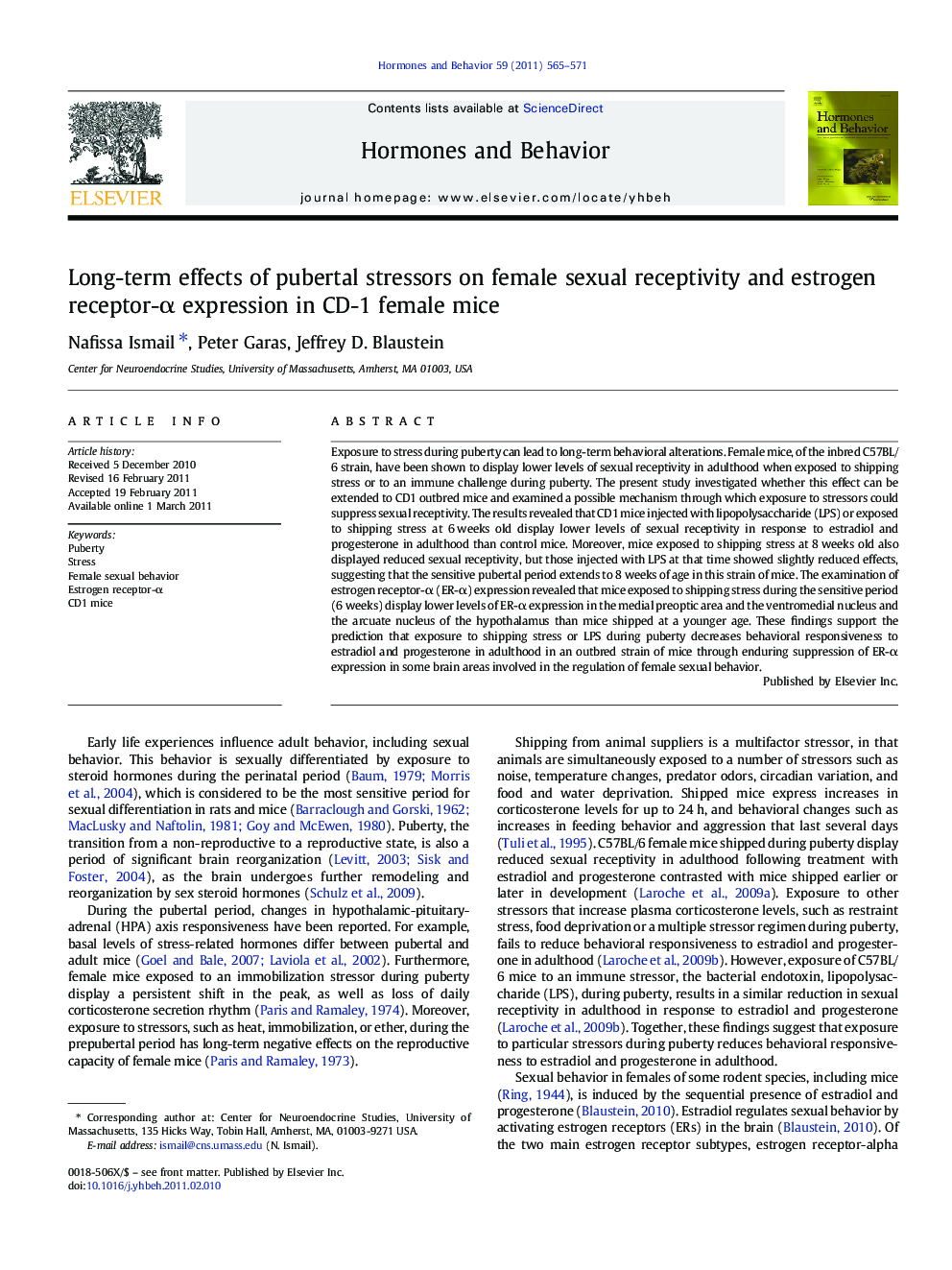| Article ID | Journal | Published Year | Pages | File Type |
|---|---|---|---|---|
| 323188 | Hormones and Behavior | 2011 | 7 Pages |
Exposure to stress during puberty can lead to long-term behavioral alterations. Female mice, of the inbred C57BL/6 strain, have been shown to display lower levels of sexual receptivity in adulthood when exposed to shipping stress or to an immune challenge during puberty. The present study investigated whether this effect can be extended to CD1 outbred mice and examined a possible mechanism through which exposure to stressors could suppress sexual receptivity. The results revealed that CD1 mice injected with lipopolysaccharide (LPS) or exposed to shipping stress at 6 weeks old display lower levels of sexual receptivity in response to estradiol and progesterone in adulthood than control mice. Moreover, mice exposed to shipping stress at 8 weeks old also displayed reduced sexual receptivity, but those injected with LPS at that time showed slightly reduced effects, suggesting that the sensitive pubertal period extends to 8 weeks of age in this strain of mice. The examination of estrogen receptor-α (ER-α) expression revealed that mice exposed to shipping stress during the sensitive period (6 weeks) display lower levels of ER-α expression in the medial preoptic area and the ventromedial nucleus and the arcuate nucleus of the hypothalamus than mice shipped at a younger age. These findings support the prediction that exposure to shipping stress or LPS during puberty decreases behavioral responsiveness to estradiol and progesterone in adulthood in an outbred strain of mice through enduring suppression of ER-α expression in some brain areas involved in the regulation of female sexual behavior.
Research highlights► We examine the effect of pubertal stress on sexual receptivity in adult CD1 mice. ► Exposure to shipping or LPS during this period decreases hormone-induced sexual receptivity. ► Exposure to shipping stress during this period also reduces ER-α expression in some brain areas. ► Pubertal stress decreases behavioral responsiveness to estradiol and progesterone.
